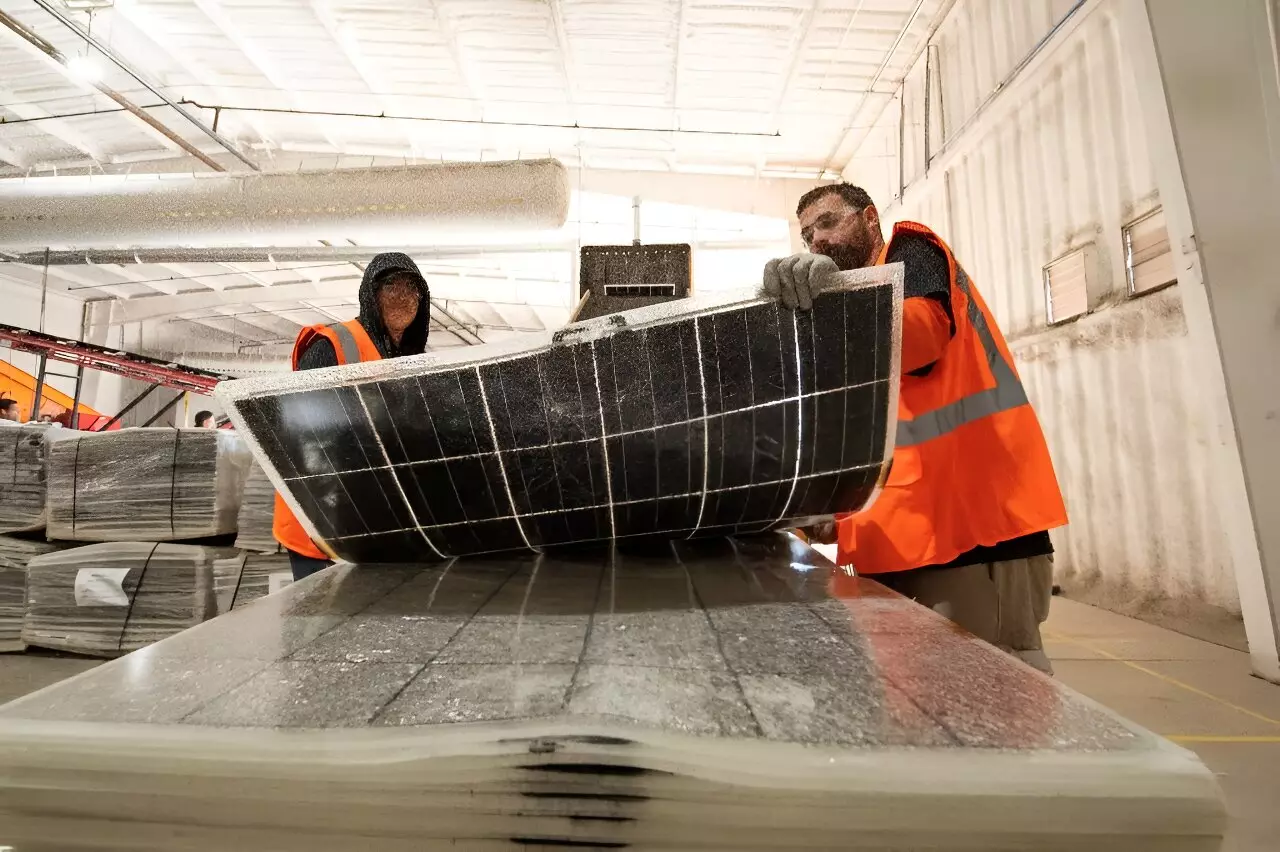As the world transitions from fossil fuels to renewable energy, the use of solar panels has become increasingly popular. In the United States, states like California are leading the way in greener energy production, resulting in the installation of thousands of photovoltaic slabs every day. However, as these solar panels approach the end of their expected 30-year lifespan, a new environmental challenge arises – what to do with the old or worn-out panels?
The CEO of Arizona-based We Recycle Solar, Adam Saghei, highlights the urgency of the situation, stating that there is a looming “tsunami” of solar panels that will soon be returning to the supply chain. Unlike other industries, the solar industry has not adequately planned for a circular economy, which is crucial for a sustainable form of energy. Therefore, there is an urgent need for a plan to retire these assets responsibly.
Saghei proposes a multifaceted approach to addressing this issue, one of which involves reusing panels. Roughly five percent of panels still have minor defects or sustain damage during transportation or installation but are otherwise functional. These panels can be refurbished and redirected to other markets, often internationally. However, for panels that are no longer operational due to various reasons such as degradation, installation damage, or hail damage, there is still value to be extracted.
According to Saghei, recycling damaged solar panels involves a process known as “urban mining.” His company’s engineers spent three years perfecting this technique, which enables the recovery of valuable materials such as silver, copper, aluminum, glass, and silicone. These commodities can be resold on the open market, providing a potential revenue stream.
While the uses for metals such as silver, copper, and aluminum are well-known, the potential applications for silicone and glass are an intriguing aspect of urban mining. Saghei suggests that the recovered silicone and glass can be repurposed for sand traps on golf courses, sandblast mixes, and even outdoor fireplaces. Moreover, with a processing capacity of up to 7,500 panels per day at their Yuma plant, We Recycle Solar remarkably achieves a waste percentage as low as 1 percent, depending on the make and model of the panels.
For Meng Tao, an expert in sustainable energy infrastructure at Arizona State University, developing an efficient lifecycle for solar panels is crucial. As the United States commits to reducing its reliance on fossil fuels, solar panel installations are projected to peak in approximately two decades. However, in the next 10 years, the number of installations will exceed the number of retirements.
The challenge with recycling solar panels lies not only in the relatively low-value of the recovered materials but also in the logistics involved. Panels are often distributed across thousands of rooftops, many of which are in remote locations. Consequently, the cost of transporting these panels to a recycling center can be exorbitant. Additionally, unlike some regions, the United States places the responsibility and cost of removal and recycling on the end-user, making it more convenient for households to dispose of old panels at local landfills.
According to Tao, bridging the gap between what consumers are willing to pay and the total lifecycle cost of panels requires policy support. Currently, many businesses are reluctant to enter the recycling industry due to the associated costs, labor intensity, and energy consumption. However, Saghei believes that recovering materials from old solar panels to create new ones is a viable, profitable solution. These emerging markets have tremendous potential, and as the industry scales up, it will be possible to reintegrate these raw commodities back into the supply chain.
As the number of expired solar panels increases, addressing the issue of recycling becomes imperative for the sustainability of the renewable energy sector. The urgency lies in planning for the retirement of these assets, ensuring responsible disposal, and maximizing the utilization of valuable materials. Reusing functioning panels and implementing efficient recycling practices, such as urban mining, offer potential solutions.
To overcome the challenges associated with recycling logistics, policy support is needed to incentivize consumers to responsibly retire their solar panels. By accounting for the full lifecycle cost of panels and providing financial assistance or subsidies for recycling, the industry can encourage greater participation and reduce the burden on end-users. Ultimately, with proper planning and support, the solar industry can pave the way for a truly sustainable and circular economy.


Leave a Reply